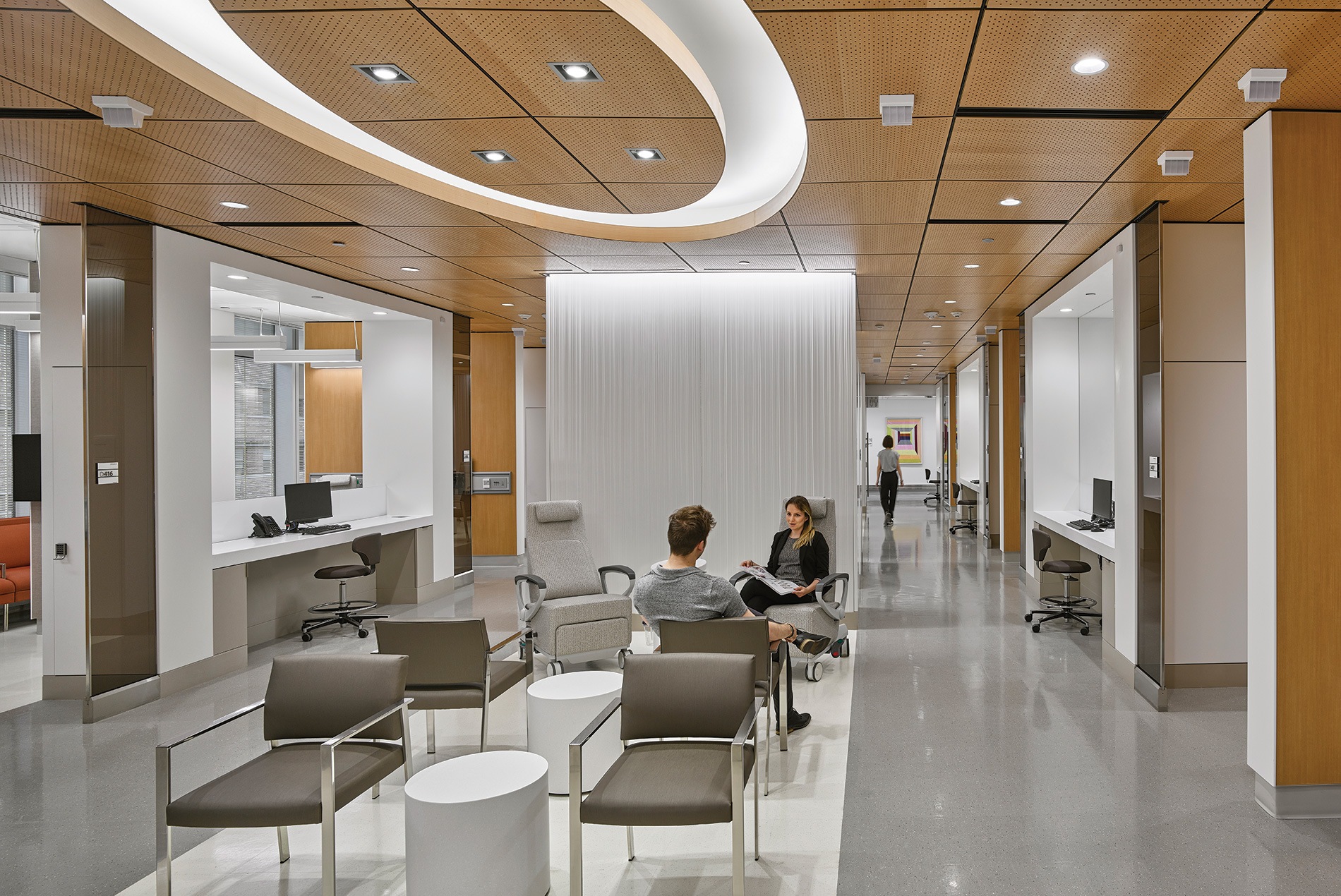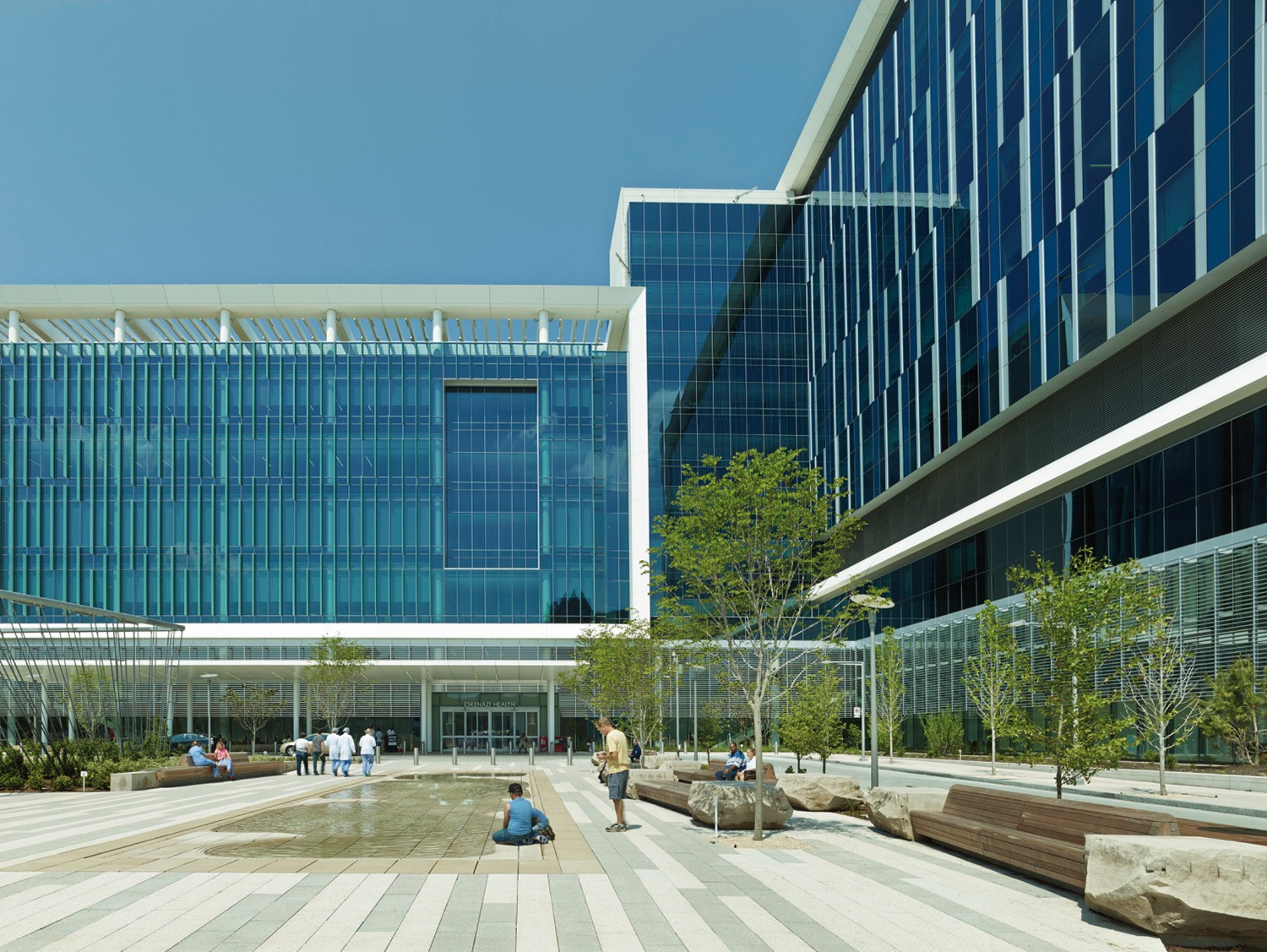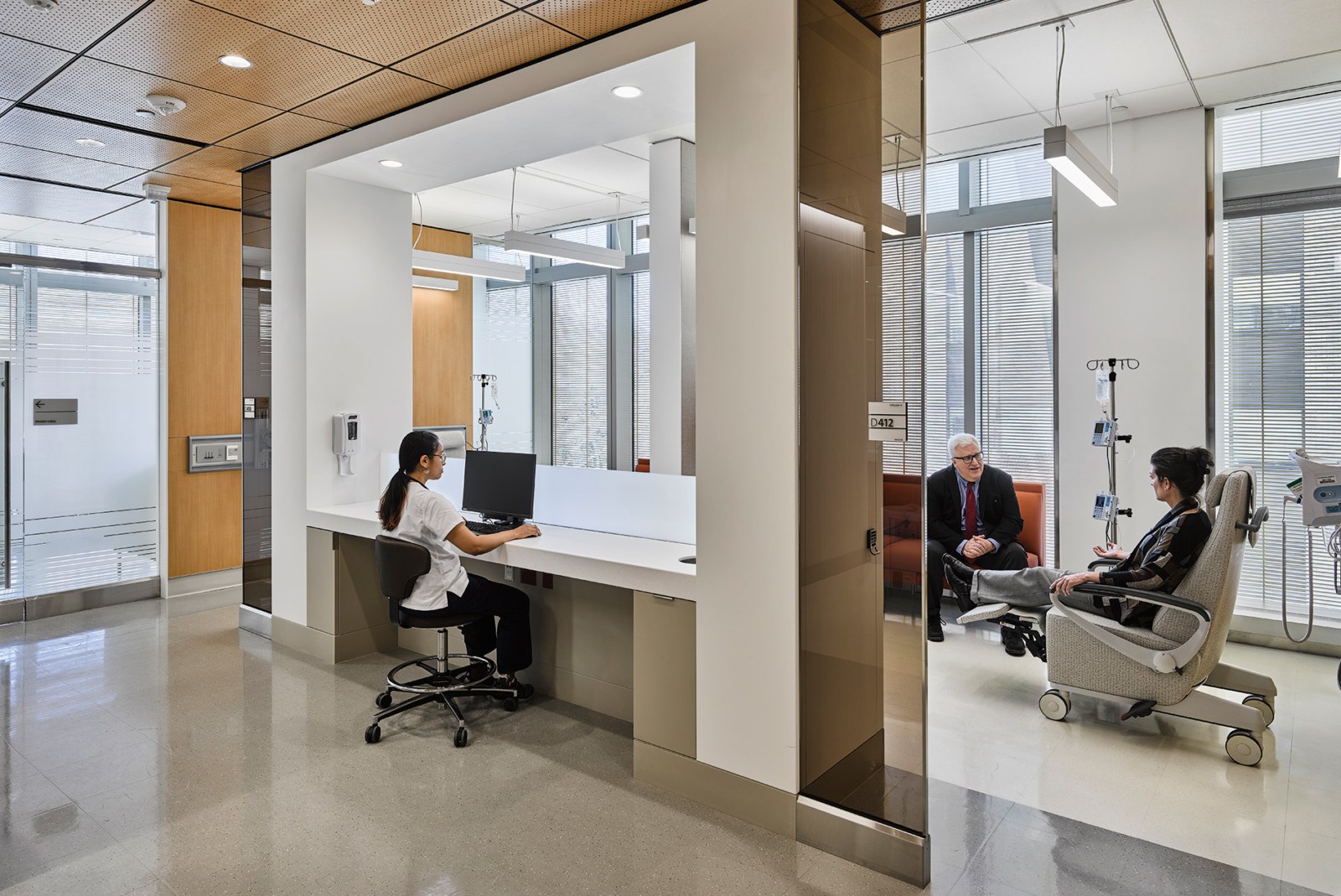Anthony Roesch, AIA, is an architect who sometimes advises clients not to build new buildings.
As director of HOK’s Healthcare Consulting group, Roesch helps organizations make strategic decisions about their care delivery, capital development programs and facilities. He has parlayed passions for architecture, healthcare, strategy and politics into a 30-year career in which he has worked on projects with more than 60 U.S. healthcare organizations. Though based in New York, Roesch usually is on the road visiting clients and collaborating with teams in other HOK offices. In addition to healthcare facility planning and operations, the Healthcare Consulting group offers expertise in strategic planning, programming, economics, finance, public health and market analysis. When, exactly, would they recommend that a client not build a new facility?

Our Healthcare Consulting team helps organizations make decisions that may not always lead to a building project. A client may have surplus space or aging buildings. Together we explore options for these under-performing capital assets. Can they right-size by reorganizing and consolidating programs? Are there benefits to building more efficient, cost effective facilities? We help them answer these questions and position themselves to deliver better patient outcomes in fewer square feet and at lower costs.
There’s no such thing as a prototype when it comes to healthcare planning. It’s always changing, which attracts people who like to develop creative solutions to complex problems. I love working with healthcare professionals who are committed to enhancing the experiences of patients and caregivers. They are passionate about how these buildings function and how they can help people. Imagine a patient who recovers from a life-threatening illness or surgery and then goes on to live a productive life. The doctors who performed the procedure, the nurses who cared for this person and the architect who designed the space all can feel some ownership in that outcome. That’s why we do it.
One of my clients, a large cancer center, surreptitiously checked me in as a patient with a possible cancer diagnosis. None of the hospital staff knew I actually was an architect who was there to experience what a patient goes through. The daylong process of checking in, getting all of my tests and finally being evaluated by the doctor was eye-opening. My main takeaway was that the staff didn’t provide enough information at every step to support what a person going through this stressful process for the first time needed. It was a typical day for the staff. But from my perspective as a patient, it felt very detached. We used this insight to create new space and processes that improved the patient experience.

I recently interviewed several clients to find out what they were thinking about the new White House administration and potential changes to the Affordable Care Act. I presented the results in a webinar for HOK’s Healthcare group of medical planners, designers and consultants. It turns out these organizations were less concerned about the policy and insurance changes that could result from health reform and more interested in the transition from fee-for-service payment to value-based reimbursement. This will leverage the cost of healthcare across the many services provided, with payments more closely tied to patient outcomes. A subset to that is hospital systems will deploy more delivery services in their communities and potentially partner with other institutions. These changes in medical delivery and funding will create more value in healthcare and have a significant impact on facilities.
My team developed the master plan and did the medical planning for the 1.3-million-square-foot Eskenazi Health Sidney & Lois Eskenazi Hospital (below), a public hospital and medical center in Indianapolis. I get great satisfaction out of improving the public health system. I’m proud of our planning and then HOK’s design of a new hospital that provides a dignified care experience for the community. Eskenazi’s respect for the people they provide care for shows in the quality of the building. It has become a standard for public hospitals, and it stands alongside the city’s libraries and museums as a highly respected public place.

Our consulting group developed a strategic master plan that enabled the Moffitt Cancer Center in Tampa to expand its clinical operations and meet an increasing demand for cancer care within the hospital. Our plan demonstrated how Moffitt could achieve a 20-25 percent expansion in its ambulatory capacity through operational improvements and space optimization. That led to HOK designing several projects recommended in the master plan.
We helped the Harris Health System, a large public network in Houston served by the Baylor College of Medicine and UTHealth, develop a regional strategy for redistributing its healthcare services across the broader market population. They wanted to push high-cost patient care services out of their large acute care facilities and into lower-cost community and specialty care clinics. We studied the market and service delivery scenarios and helped them plan several clinics. Harris Health then constructed several clinics and reconfigured its hospitals to provide more flexibility. They were able to increase capacity without expanding their actual hospitals. This approach also reduced their capital outlays.
We always want to establish long-term relationships with clients. That’s very important for healthcare, because clients seldom do only one project. They are looking for firms that are true partners. This approach leads to the best planning and design solutions, which results in happy clients. It also attracts the best people and clients to HOK. It’s all a big circle.
Our team is on the lookout for the next disruption to healthcare. We all know how Amazon changed shopping and how Uber is transforming public transportation. We can see exciting developments in biotechnology, home care and monitoring, telemedicine and wearables that will benefit patients. These new technologies ultimately will transform the paradigm of going to the hospital for care, which will forever alter healthcare delivery strategies and facilities. I like to say that form follows funding. Though we’re at the early stages of this transformation, it takes five to 10 years to develop new healthcare facilities. When these new technologies are more rapidly paid for and reimbursed, the changes will accelerate exponentially.
